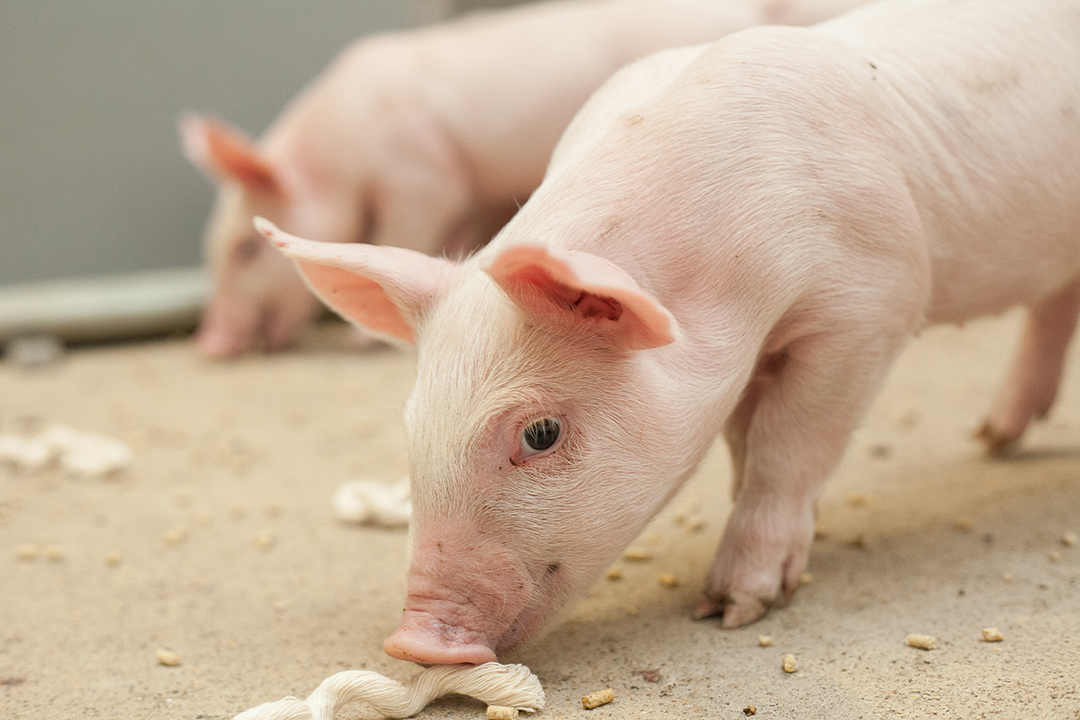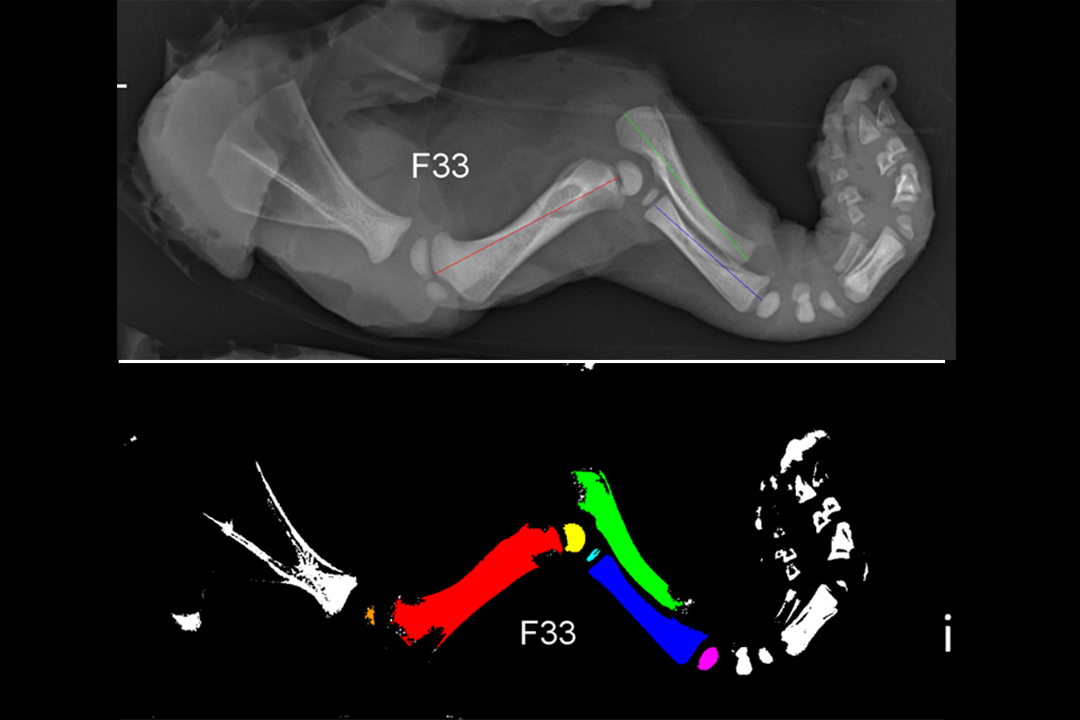
WCVM research targets deadly PRRS virus
Researchers at the Western College of Veterinary Medicine (WCVM) have been making headway in their investigation of a disease that has a huge economic impact on swine producers worldwide.
By Jourdyn SammonsPorcine reproductive and respiratory syndrome virus (PRRSV) infection causes severe reproductive failure that’s characterized by high fetal morbidity and mortality.
While PRRSV type 1 (or PRRSV1) is the virus species most prevalent in Europe, PRRSV type 2 (or PRRSV2) is most prevalent in North America and has more severe effects than type 1. Both species cause two coinciding clinical presentations: reproductive failure in pregnant sows and respiratory disease in post-natal pigs.
PRRSV is an RNA virus that is capable of mutating, making the development of a PRRSV vaccine increasingly difficult.
Led by swine specialist Dr. John Harding of the WCVM’s Department of Large Animal Clinical Sciences, a research team has been focusing on PRRSV2 and its role in reproductive failure since 2012. Through their study of pregnant sows and gilts, the researchers have discovered some significant details of how mechanisms associated with the type 2 virus may affect fetuses.
As part of Harding's multi-faceted approach to studying PRRSV, his team is comparing skeletal growth in healthy fetal pigs to those that are infected with the virus.
To make this comparison, the researchers collect a series of measurements from the fetuses using photographs and X-rays of specific limbs. By using a computer program that analyzes these images and determines accurate length and area measurements, the WCVM team aims to distinguish the features of those fetuses that appear to be more resilient to PRRSV.
Harding and his research team have benefited greatly from the assistance of WCVM medical imaging specialist Dr. Gregory Starrak, who has been eager to help the research team. He emphasizes the importance of collaborating with other specialists and researchers throughout the veterinary college.
“From a clinical side, it helps us to get rid of bias and see a more pure-science type of thought process go into it [research], says Starrak, an associate professor in the WCVM’s Department of Small Animal Clinical Sciences.

WCVM scientists have made significant advancements in PRRSV research over the past seven years, including a better understanding of the cause of fetal death from the disease.
Specifically, they have identified a combination of factors that includes the fetal response to the virus along with specific activity that occurs at the location where the placenta latches onto the sow’s uterine wall. These findings contradict previous theories that fetal death resulted from vasculitis of the umbilical cords.
Another important finding is about the fetuses’ susceptibility to the virus. Contrary to popular belief that PRRSV "should affect the little guys first,” the researchers have found that larger fetuses are more susceptible to the virus than the smaller ones.
Their conclusions point to the need for more investigation about differences in susceptibility due to size as well as to other factors that contribute to resilience. This vital information can provide a better understanding of how the virus functions and point to possible methods for controlling its spread.
Conducting PRRSV research has had its share of challenges. Using pregnant animals for research is a costly endeavour that requires larger housing facilities and smaller groupings of the research animals to ensure that they receive adequate care. Allowing the pregnancies to advance also requires significant time and money.
Although reproductive research can be complex and expensive, Harding and his research team haven’t been deterred from their efforts to better understand the virus. Learning more about the reasons why certain fetuses are more resilient to PRRSV and determining the degree of their resilience are key components to understanding this complicated virus.
While further research is still necessary to fully understand resiliency to PRRSV, the researchers are optimistic that their efforts will eventually give swine producers the information they need to genetically select for PRRSV-resilient pigs. This outcome would ease the fears of producers, better protect pig welfare, and improve the economic future of the world’s swine industry.
“It’s been a good run. We have learned a lot,” says Harding.
Genome Canada, Genome Prairie and Genome Alberta provided financial support for the WCVM team’s PRRSV-related research studies. PigGen Canada, a pre-commercial research consortium comprised of Canadian breeding stock companies, is the industry partner.Jourdyn Sammons of Gleichen, Alta., is a fourth-year animal bioscience student in the University of Saskatchewan’s College of Agriculture and Bioresources. Her story is part of a series of articles written by WCVM summer research students.
